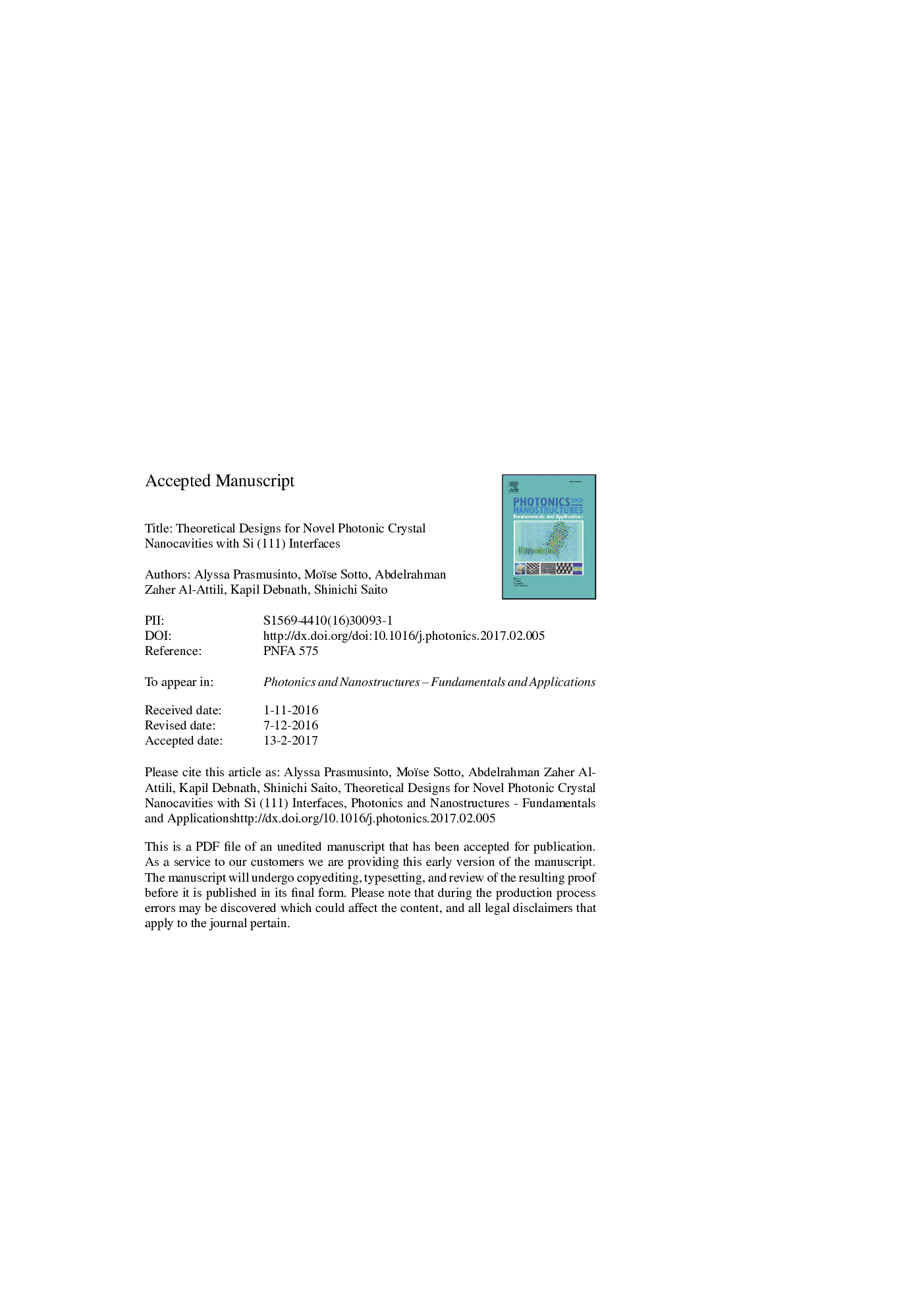| Article ID | Journal | Published Year | Pages | File Type |
|---|---|---|---|---|
| 5449902 | Photonics and Nanostructures - Fundamentals and Applications | 2017 | 13 Pages |
Abstract
We designed a series of photonic crystal (PhC) nanocavities using atomically flat silicon (111) interfaces and examined the impacts of the surfaces on the optical confinement. The nanocavities were simulated using the 3D finite-difference time-domain method and assessed against existing PhCs. Despite the design restrictions, we showed that a Q value up to 115,800 and Q/V values of 103-105λâ3 are achievable without further design optimization. The results suggest that silicon (111) surfaces can be used for fabricating PhC nanocavity-based devices in a practical and economical way with high manufacturing tolerance and increased repeatability.
Related Topics
Physical Sciences and Engineering
Materials Science
Electronic, Optical and Magnetic Materials
Authors
Alyssa Prasmusinto, Moïse Sotto, Abdelrahman Zaher Al-Attili, Kapil Debnath, Shinichi Saito,
